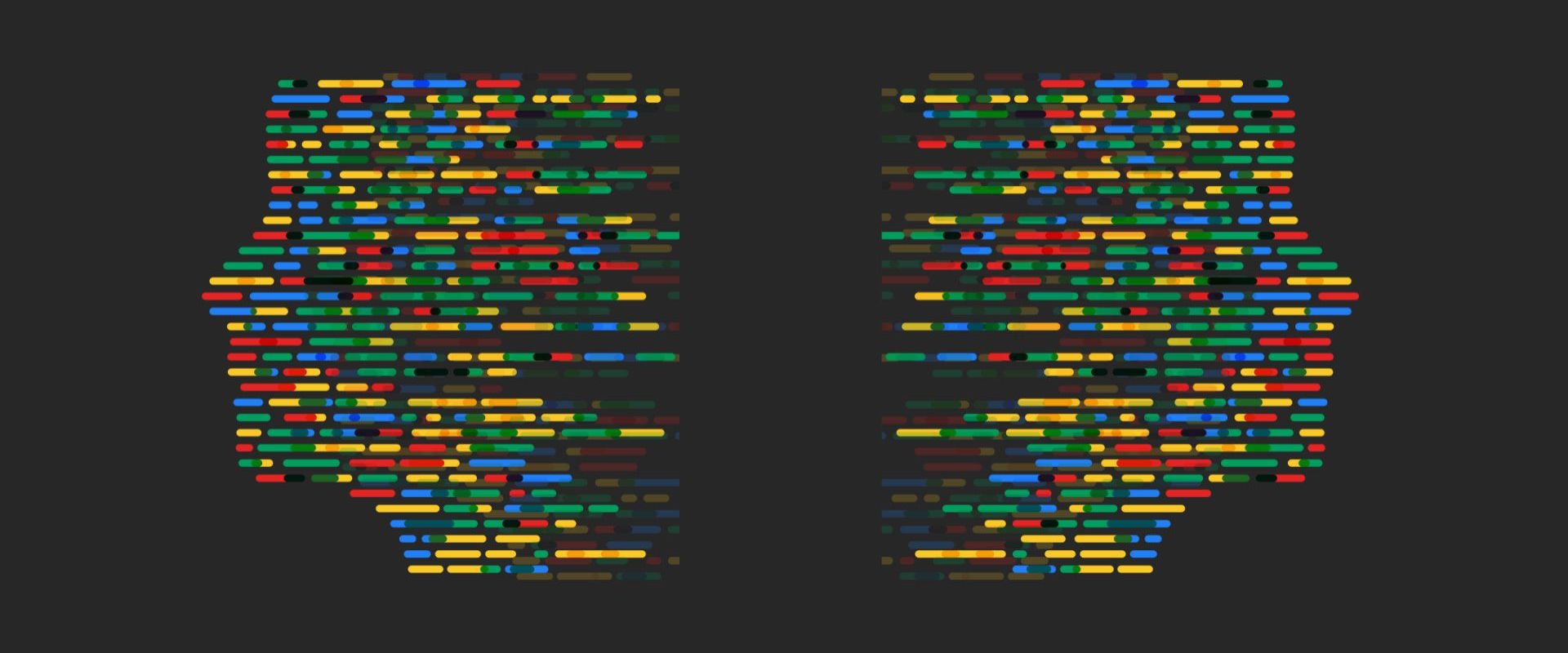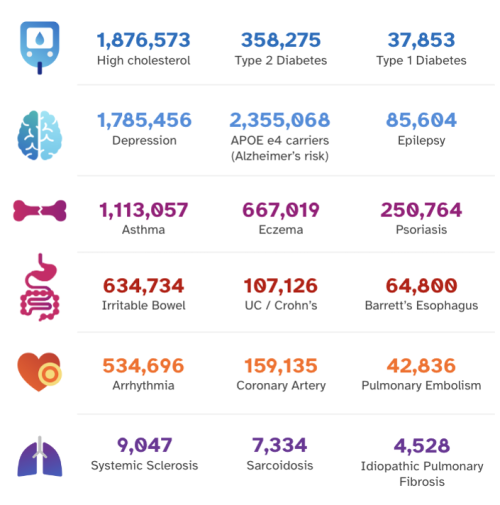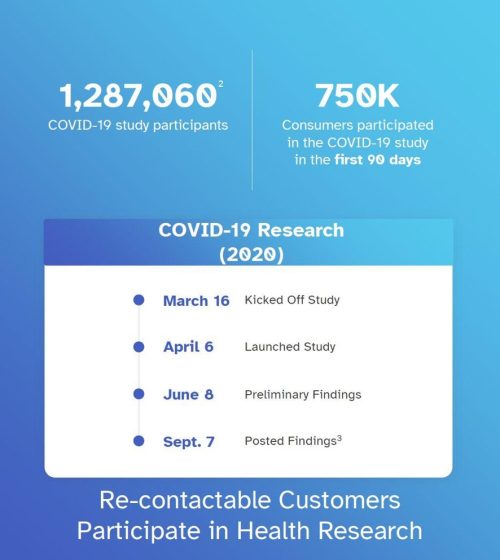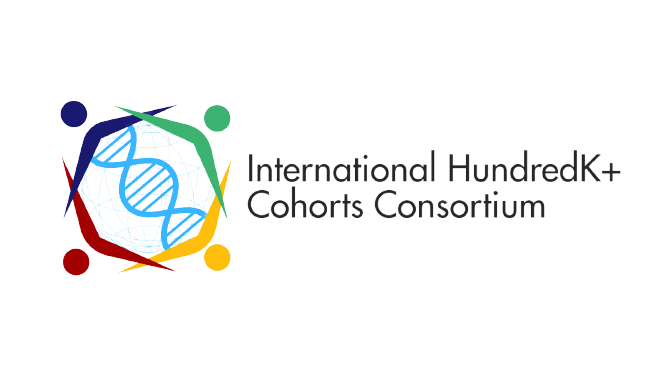
IHCC Spotlight: 23andMe
23andMe, Inc. pioneered personalized genetics, offering individuals direct access to their genetic information. Beyond providing direct-to-consumer genetic testing services, 23andMe has established a research cohort of over 11 million individuals, fueling scientific advancements and fostering a deeper understanding of human health and genetics.
Over 80% of 23andMe customers opt into research, creating a genotyped (via an Illumina genotyping array) research cohort with over 11 million individuals spanning European, African, Latine, and South and East Asian descent. Customers provide phenotypic data by answering research surveys surfaced to them in their accounts. Over 4.5 billion phenotypic data points have been collected across thousands of phenotypes ranging from diabetes and heart disease to rare diseases to personality and lifestyle behaviors. Figure 1 shows the scale of a handful of our case cohorts. These data have provided valuable insights into the genetic underpinnings of human characteristics and led to more than 230 papers published in peer-reviewed scientific journals.

Customers can opt into research during the initial registration process, and all participants must provide informed consent before their data is used for research purposes. A third-party institutional review board (Salus IRB) reviews all research programs and protocols. 23andMe’s rich dataset then empowers researchers to explore correlations between genetic variations and a wide range of traits, diseases, and behaviors.
Due to the ongoing relationship 23andMe has with its customers, its research program has a unique ability to re-contact research participants, enabling the gathering of additional survey responses and biological samples over time. An example of this capability is the research 23andMe conducted on Covid-19. When the pandemic emerged in March 2020, 23andMe researchers jumped at the opportunity to leverage the recontactable cohort to learn about the genetic underpinnings of Covid-19 susceptibility and severity by launching a Covid-19 survey to 23andMe research participants. In only three months, over 750,000 participants answered the survey, enabling the discovery of a genetic association between Covid-19 and blood type. Learn more about the Covid-19 studies here.

The 23andMe research cohort is a testament to the power of collaboration between individuals and the scientific community. As 23andMe expands its research cohort, we anticipate further breakthroughs and a deeper understanding of our genetic makeup. As such, we are eager to collaborate with academic institutions. See our complete list of scientific publications, white papers, and conference presentations at https://research.23andme.com/publications/. For more information on how to collaborate, visit https://research.23andme.com/collaborate/.





